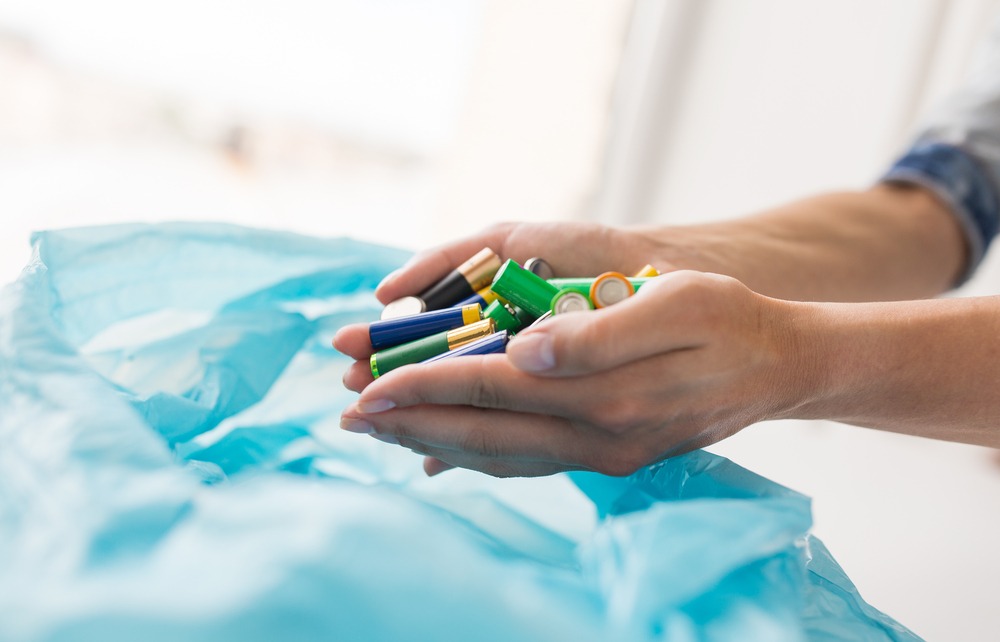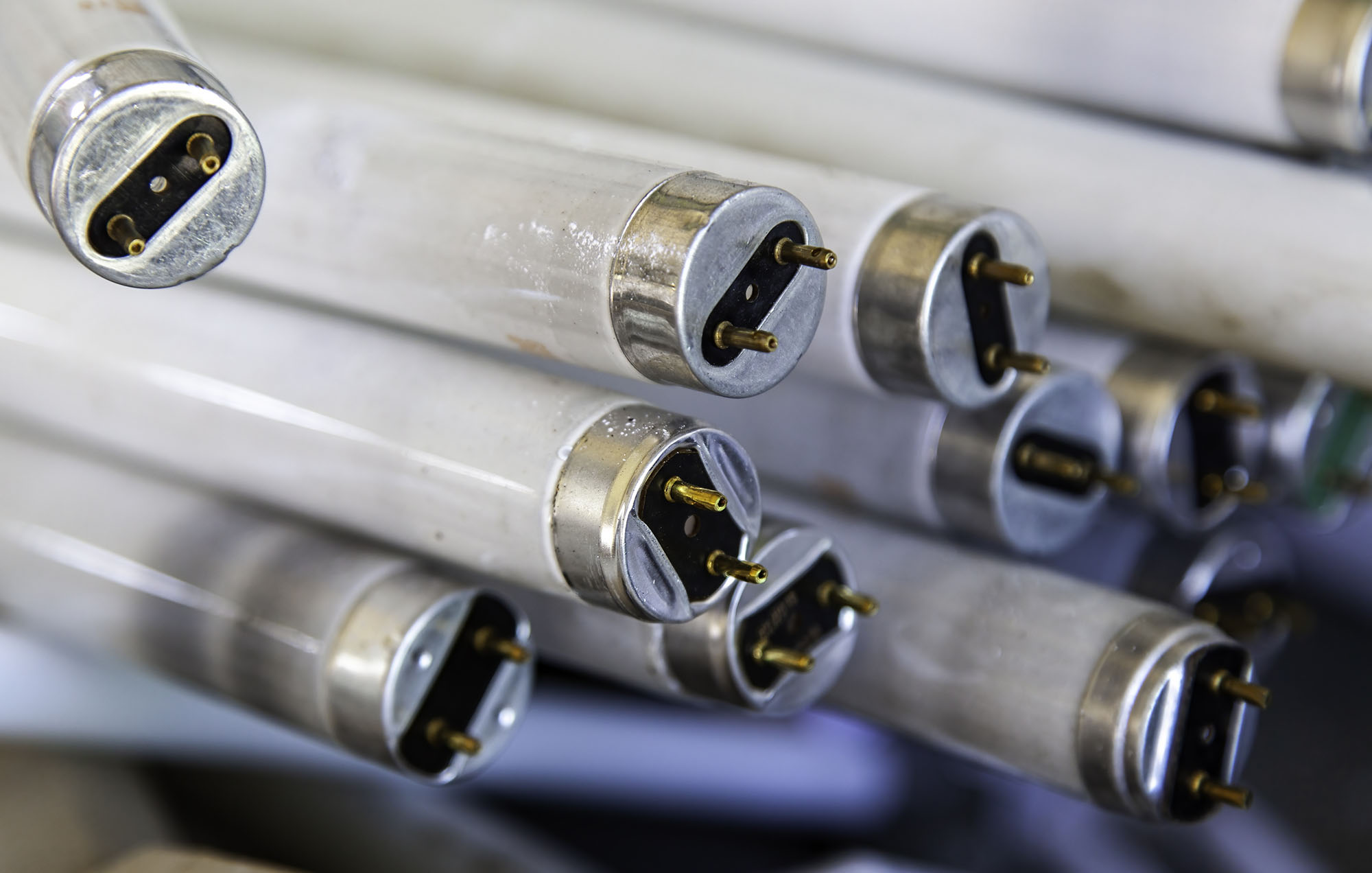+1-809-692-9784
Zona Franca San Isidro, Santo Domingo Este, República Dominicana.
+1-787-285-5686
1300 Calle John Smith, Humacao, Puerto Rico 00791.
Services
Recycling of Batteries and Fluorescent Tubes
-
Who generates universal waste and how?
Universal waste can be generated by individuals, businesses, hospitals and... almost anyone. Universal wastes include certain batteries, fluorescent lamps, mercury devices, and pesticides. The following list contains some common examples of activities that generate universal waste:- Replacement of certain types of batteries, including those used in cordless and cellular telephones, hearing aids and watches
- Replacement of mercury thermometers.
- Building repair and remodeling, when replacing a mercury thermostat.
- Replacement of fluorescent bulbs containing mercury and / or lead
- Remove mercury switches from motor vehicles.
NOTE: The use of fluorescent lamps saves energy, reduces power plant emissions and is generally beneficial to the environment. However, these lamps contain mercury and/or lead and should be handled responsibly and recycled after their useful life.- Who regulates universal waste in Puerto Rico?
Universal waste is regulated by the Department of Natural and Environmental Resources (DNER) and the Federal Environmental Protection Agency (EPA).UNIVERSAL WASTE; DEFINITION OF "BATTERY".
In accordance with RCRA 40 CFR 273, batteries classified as hazardous waste may be collected under universal waste standards. These universal waste standards were created in an attempt to facilitate the collection of battery waste and its shipment for recycling. 40 CFR 273.9 Battery is a device consisting of one or more electrically connected electrochemical cells that is designed to receive, store, and supply electrical energy. An electrochemical cell is a system consisting of an anode, cathode, and electrolyte, plus such connections (electrical and mechanical) as may be necessary to enable the cell to supply or receive electrical energy.UNIVERSAL WASTE REGULATION APPLIES TO BATTERIES
40 CFR 273.2 Batteries covered by 40 CFR part 273 apply to all persons managing batteries as described in section 273.9, except persons managing spent lead-acid batteries that are managed under 40 CFR parts 266, subpart G. Batteries as described in section 273.9, which are not wastes of part 261 of this chapter, including those that do not meet the waste generation criteria.Generation of battery waste.
- A used battery becomes waste on the date it is discarded (e.g., when it is sent for recovery),
- An unused battery becomes waste on the date on which the generator decides to dispose of it.
- ¿Qué tipo de batería se pueden reciclar?
The types of batteries that are recycled are as follows:-
- Alkaline
- Lead Acid
- Lithium ion
- Nickel Cadmium
- Zinc Carbon
- List item
- Batteries for portable devices
- Cell phone batteries
- Nickel-metal hydride (NiMH)
- Batteries for telecommunications equipment
- Lithium batteries
- and all types of rechargeable batteries.

REQUIREMENTS FOR UNIVERSAL WASTE HANDLER
A universal waste handler must label or mark universal waste to identify the type of universal waste as specified below:- Universal waste batteries (i.e., each battery), or a container in which batteries are contained, must be labeled or clearly marked with either "Universal Waste: battery(ies)" or "Waste Battery(ies) ). " or "used battery(ies); "
E-cycling brinda servicios de reciclaje de baterías seguros para el medio ambiente, asegurándose de que su instalación cumpla plenamente con las regulaciones gubernamentales, locales y federales.- We provide U.S. DOT-compliant containers for the proper handling of battery storage.

- When does a mercury-containing lamp become waste?
- What types of lamps can be recycled?
- How should I pack my lamps for pick-up?
When does a mercury-containing lamp become waste?
A used tube containing mercury becomes waste on the date the generator/handler permanently removes it from its lamp. A lamp containing an unused mercury-containing tube becomes waste on the date the handler decides to discard it.What types of lamps can be recycled?
Types of recycled lamps include, but are not limited to:- LED
- Straight fluorescent (all lengths and diameters)
- Fluorescent Compacts (with and without ballast)
- Circular
- Type U
- UV lamps (all sizes)
- Incandescent
- Halogen
- HID (high-pressure sodium, metal halide, biax, high-intensity, bimetallic)
How should I pack my lamps for pick-up?
Lamps must be intact: all lamps must be packaged in a manner that "minimizes" breakage. The OEM box is the most popular packaging method. If the OEM box is not available, we can provide storage containers as an alternative. All lamps must be free of foreign materials, including tape (on the actual lamp) and paper sleeves. If your facility has fluorescent lamp disposal needs, using E-Cycling's Recycling Services will help keep your workplace safe, the environment clean and protect your environmental responsibility.Technology is evolving every day, and with innovation in the industry everyone is trying to keep up, LED lighting has become very popular today. It has been widely adopted for a variety of lighting uses and has been slowly replacing incandescent and fluorescent lights in recent years.
LED tubes have been adopted in various fields, which include displays, laboratory equipment, mobile devices, clocks, calculators, home lighting, retail lighting, traffic signs, automotive lighting, etc.
In order to meet your needs and at the same time give you the assurance that your waste lamps are properly managed, we provide full documentation evidence, ensuring your environmental responsibilities. In addition, we comply with all laws and government regulations and permits necessary to handle your used or discarded LED/fluorescent lamps.
- What is LED?
- How are LEDs removed?
- Advantages and applications of LEDs
- LED reuse
- Importance of LED recycling
- List item
LED stands for light emitting diode, and was first used in 1968. LED, a semiconductor light source, has been widely adopted for various lighting uses and still continues to be a crucial issue.
How are LEDs removed?
LEDs are mainly made of electronic components such as PCBs, diodes, semiconductors, etc. Therefore, they should be treated in the same way as traditional electronics are treated. They are collected separately from household waste and should be treated in the same way as standard electronic equipment.
Advantages and Applications of LEDs
LED lights have the following advantages over incandescent bulbs:
- LEDs have a longer lifetime than incandescent bulbs; the average lifetime of the former (LEDs) is 50,000 hours, while that of the latter (incandescents) is just 1,200 hours.
- LED consumes less electricity and provides higher brightness, which makes it a more environmentally friendly and energy saving option, not to mention that the LED bulb does not contain mercury as the CFL bulb does. The LED bulb is very durable and therefore lasts longer than a traditional bulb.
LED reuse
In terms of the product cycle, LED is considered more environmentally friendly, but it will be even more so if the LED can be recycled. In fact, more than 95% of LEDs can be recycled.
If an LED tube does not contain hazardous substances, then it meets the standards set by the Restriction of Hazardous Substances (RoHS) Directive. According to the Directive, the LED is recyclable.
Importance of LED recycling
Although LED lights are already environmentally friendly, they will have a less negative impact on the environment if recycled correctly. According to recent research, most LEDs contain a large amount of nickel and colored LEDs contain a lot of lead and arsenic. These substances are harmful to the environment and human health. Despite the fact that LEDs are a more environmentally friendly option compared to traditional lights, they still cannot simply be discarded after they expire. Given the increasing demand and use of LED lights, recycling LEDs may become more critical than extending the life of LEDs.
1. Filling containers
Once you receive your containers, fill them with waste at your own pace. The containers are approved for safe storage and transport.
2. Labeling containers
Each universal waste must be labeled individually or by container with one of the following:
- Universal Waste - Fluorescent Tubes
- Discarded Fluorescent Tubes
- Used Fluorescent Tubes
3. Call for Pickup
When a container is full and sealed, call to schedule a pickup. Your container will be transported for recycling to our facility located in Humacao, P.R.
Services
Contact Us
Dominican Republic
Zona Franca, San Isidro. Edificios Multiusos I, Santo Domingo Este, República Dominicana. | +1-809-692-9784
Puerto Rico
1300 CALLE JOHN SMITH, HUMACAO, PUERTO RICO 00791 | +1-787-285-5686
